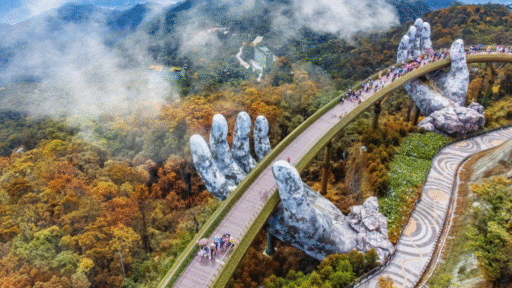On 22 September, the United Nations adopted the Pact for the Future at the Summit of the Future in New York. This once-in-a-generation agreement is a landmark moment, setting the stage for more effective global governance in the face of modern challenges. With a total of 56 actions, the pact addresses critical areas including sustainable development, international peace and security, science, technology, and innovation, as well as the role of youth and future generations. This forward-looking agreement, reached after years of negotiations, reflects the collective commitment of nations to tackle global crises while reforming multilateral systems to meet 21st-century demands.
Sustainable development and financing for development
At the heart of the pact is a renewed commitment to the Sustainable Development Goals (SDGs) and a comprehensive framework for financing sustainable development. The pact aims to accelerate the implementation of the 2030 Agenda, with a particular focus on supporting developing countries. It calls for a reform of the international financial architecture to better serve these nations, ensuring that they have a greater voice in global financial institutions. Additionally, it sets out measures to address sovereign debt, improve access to financing, and provide a stronger financial safety net for countries affected by economic shocks.
A key element of the pact is its emphasis on climate action. It reaffirms the global commitment to limit temperature rises to 1.5°C above pre-industrial levels and to transition to net-zero emissions by 2050. The pact stresses the importance of mobilising financial and technical resources to help developing nations adapt to the impacts of climate change and invest in renewable energy, ensuring a just transition for all.
International peace and security
One of the most significant actions outlined in the Pact for the Future is the reform of the United Nations Security Council, which aims to make the body more representative and effective. The pact acknowledges the under-representation of Africa and commits to addressing this issue to ensure a more equitable global security framework. It also includes a recommitment to nuclear disarmament, marking the first multilateral progress in this area in over a decade.
The pact also focuses on emerging security threats, particularly the weaponisation of new technologies like lethal autonomous weapons. It reaffirms that international law, including the laws of war, should govern the use of these technologies. By strengthening global frameworks for peace and security, the pact aims to prevent conflict and reduce violence worldwide.
Science, technology, and innovation: The Global Digital Compact
The role of technology is central to the Pact for the Future, with the adoption of the Global Digital Compact (GDC), a key annex to the agreement. The compact aims to bridge the global digital divide by ensuring universal internet access by 2030, connecting schools, hospitals, and communities. It also promotes responsible governance of digital technologies, including artificial intelligence (AI) and data management, with a focus on human rights and sustainability.
The Pact for the Future also recognises the growing importance of the space sector, highlighting the need for sustainable space exploration and utilisation. It includes commitments to strengthen international frameworks that govern outer space, emphasising the prevention of an arms race and ensuring that all nations can benefit from the peaceful and sustainable exploration of outer space. The pact also stresses the importance of space sustainability, acknowledging that the increasing use of space must be carefully managed to prevent debris, resource depletion, and other long-term environmental risks that could jeopardise the future of space activities.
Additionally, the Global Digital Compact introduces a framework for global cooperation on AI governance, ensuring that the development and deployment of AI technologies adhere to ethical standards and promote the public good. By fostering open data, common standards, and international collaboration, the compact seeks to create a digital future that is inclusive, safe, and beneficial to all.
Youth and future generations
Recognising the importance of intergenerational equity, the Pact for the Future includes the first-ever Declaration on Future Generations. This declaration highlights the need to consider the long-term impacts of today’s decisions on future generations. It emphasises youth participation in decision-making processes at both the national and global levels, ensuring young people have a voice in shaping policies that will affect their future.
The declaration also calls for concrete measures to protect the environment, promote sustainability, and secure the well-being of future generations. By integrating these principles into global governance, the pact ensures that the interests of future generations are protected in the face of climate change, technological advancement, and other emerging challenges.
Transforming global governance
The Pact for the Future addresses the need for comprehensive reform of global governance systems to ensure they are fit for the challenges of today and tomorrow. This includes reforms to international financial institutions and the United Nations Security Council, as well as stronger partnerships with civil society, the private sector, and local authorities. The goal is to create a more effective, inclusive, and networked multilateral system that can respond to global crises in a timely and coordinated manner.
The pact acknowledges that many of the institutions governing international relations were created in the aftermath of World War II and are no longer equipped to handle the complexities of the modern world. By calling for reforms that make these institutions more representative and transparent, the pact seeks to rebuild trust between the Global North and South, fostering a more balanced and equitable global order.
Conclusion
The Pact for the Future sets the course for a new era of global cooperation, with technology at its core. From sustainable development and climate action to digital governance and youth empowerment, the pact provides a comprehensive roadmap for addressing the most pressing issues of our time. While the pact is non-binding, its 56 actions offer a framework for both immediate and long-term global reform, positioning the international community to tackle emerging risks and ensure a sustainable future for all. As United Nations Secretary-General António Guterres said, “The Summit of the Future sets a course for international cooperation that can meet expectations … now, let’s get to work”.
Access Partnership has been involved in the negotiations of the Pact of the Future, with Senior Practice Manager for Space & Connectivity Hamza Hameed speaking at the Summit of the Future. You can watch his remarks here: https://webtv.un.org/en/asset/k1s/k1szgrqpx8.
For any engagements with the Pact, the GDC, or the Declaration on Future Generations, please reach out to Hamza at [email protected].


Authors






